4 min read
Controlling Damaging Lawn Insects with Nematodes
By: Shawn Karn, The Grass Expert on Aug 2, 2017 4:51:44 PM
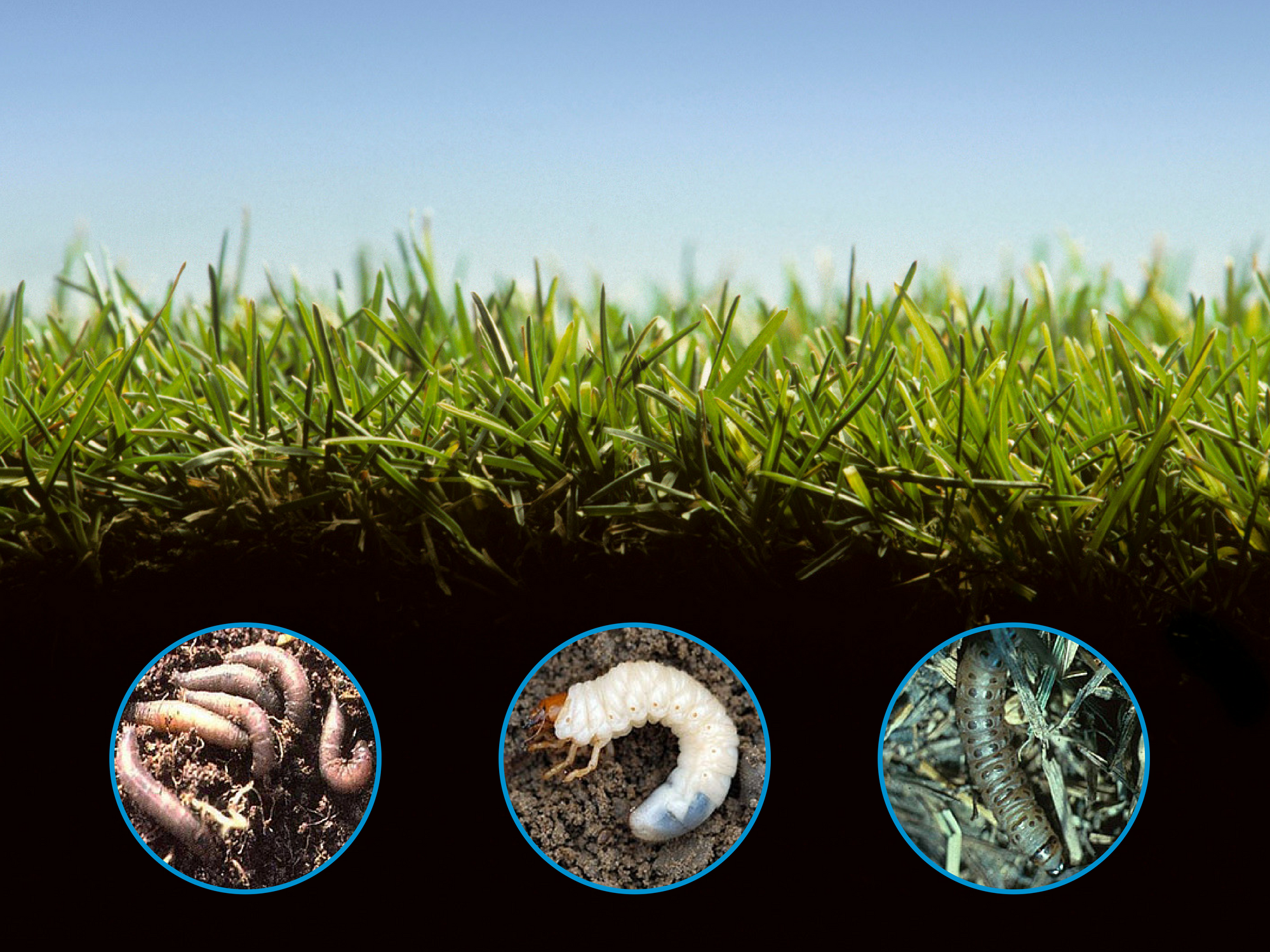
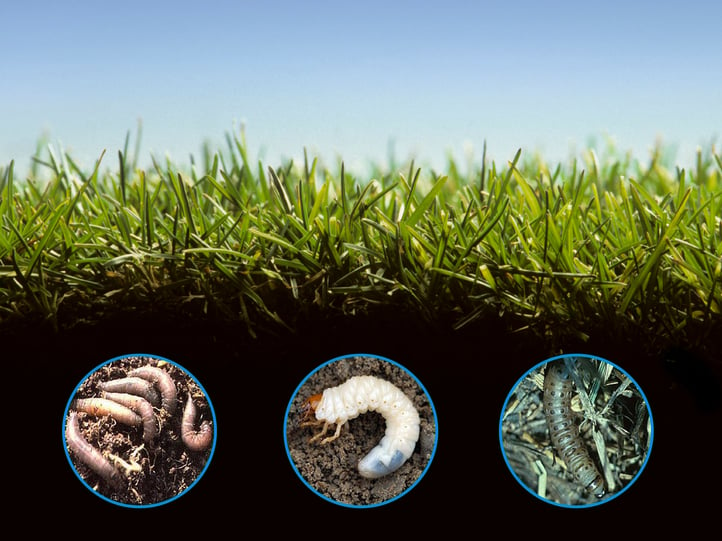
If you're not prepared, a beautiful lawn can be destroyed right before your eyes by a foe you can barely see. Unless you're digging through your soil and have some top-notch eyesight, you could be completely unaware that some common lawn pests are slowly but surely killing your turf. And even if the damage they do is minimal, who's to say other animals won't tear up your lawn in search for some yummy little insects to eat?
Luckily, insect damage can be avoided with the right kind of protection. In terms of preventing damage, beneficial nematodes can be just what your lawn ordered, and if applied correctly and at the right time, will help control lawn insects before they do any serious damage.
What are Beneficial Nematodes?
Beneficial nematodes should be your main weapon against destructive insects. Beneficial nematodes are used as natural predators for insects that may damage your grass.
These natural predators search through your soil to find their prey. Once they've found them, they will enter the insect, infecting and killing the host, as seen below. After the infected insect dies, the dead bodies are left as food for new nematodes that are rapidly multiplying and continuing to protect your lawn.
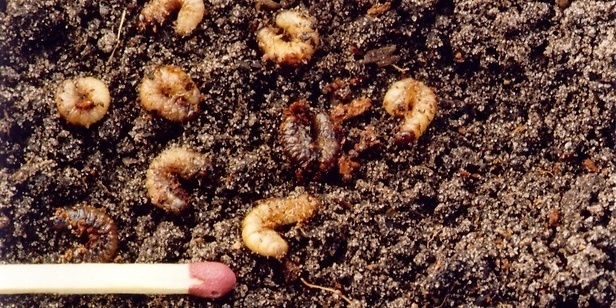
Beneficial nematodes are incredibly effective for controlling lawn damaging insects, like white grubs, leatherjackets, and sod webworms.
White Grubs
White Grubs are the larve of beetles, like the Japanese Beetle or the European Chafer Beetle. White Grubs can cause a lot of damage to the lawn, either by feeding on the roots of the plant, or from other animals ripping the lawn in search of grubs to feed on.
White Grub larvae are white, with six strong legs near their head. They feed on your lawn, garden plants, and even potted plants. Depending on the type of grub, their life cycle can range from 1 to 2 years.
In Spring, the grubs are actively feeding, fully grown larvae. In Summer, the grubs pupate into beetles. The beetles only live for about a week, mating and laying eggs which hatch a few weeks later. In Fall, the new grubs feed until temperatures drop when they burrow deep in the soil to avoid freezing. The grubs then emerge the following Spring.
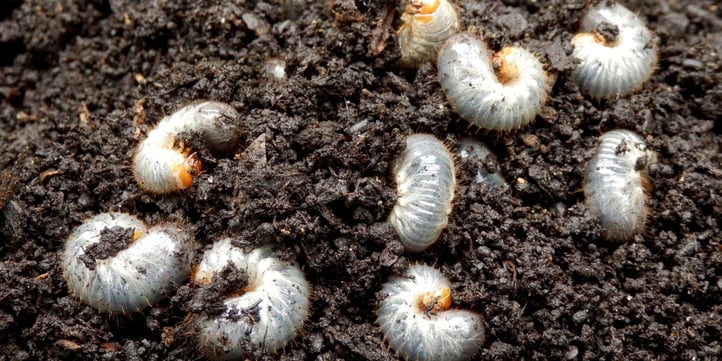
Many grubs only cause minor damage, but other grubs - like the European Chafer - can cause extensive damage to lawns. Major damage can also occur when raccoons, skunks, and crows rip the lawn apart while searching for grubs.
RELATED > Insect Of The Month: White Grubs
Leatherjackets
Leatherjackets are the larvae of the European Crane Fly. While the adult flies are rather harmless, the larvae can do a number on your lawn if left untreated.
Generally, leatherjackets are light gray to grayish brown in colour, with a tough skin (hence the name). They feed on the root crowns of the grass during Fall and overwinter in the larvae stage.
In Spring, they continue to feed on the lawn. They mostly stay underground, but on warm, damp nights they come up to the surface and feed on the aboveground parts of plants. Any plant damage often becomes noticeable during early Spring.
Leatherjackets typically stop feeding in mid May, and then go into a nonfeeding stage during July and August. From late August through to September, pupae wriggle to the surface and the adult crane flies emerge.
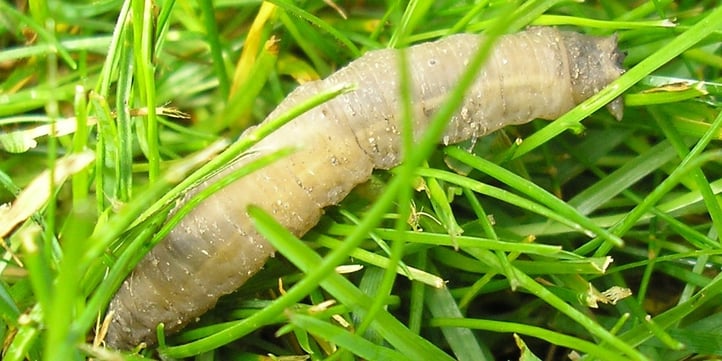
In most cases, leatherjackets themselves cause very minor damage to the grass, as plants have a remarkable ability to recouperate from minor root damage. Major damage is usually encountered when birds and other animals scratch the lawn surface, in search for a meal; the leatherjackets in your lawn.
Sod Webworms
In their caterpillar and larval stages, Sod Webworms can be very destructive.
Typically, Sod Webworms have a dark head with light brown or gray bodies and dark spotting. Their life cycle is around 2 to 3 years.
Sod Webworms overwinter as young larvae, just below the soil line. During early Spring, the larvae feed on the upper root systems, stems, and blades of grass. In early May, they pupate in underground cocoons, before emerging as adults two weeks later.
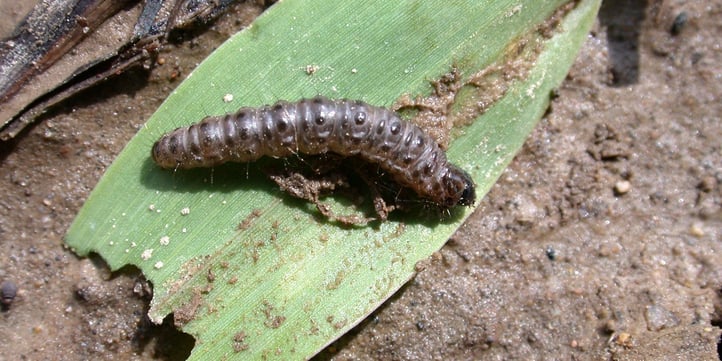
Damage from Sod Webworms usually occurs in July and August, when the grass isn't growing rapidly. The heat of the sun makes any plant damage even worse, since the already damaged crown gets even more sun exposure.
As the caterpillar grows, it can damage an area of a lawn about the size of a softball. If the infestation is severe, the spots may develop into much larger areas.
How Nematode Grub Control Protects Your Lawn
As we discussed earlier, beneficial nematodes hunt for destructive insects in your lawn, infecting them and killing them, while at the same time multiplying to continue protecting your lawn from minor plant damage or major damage from other animals.
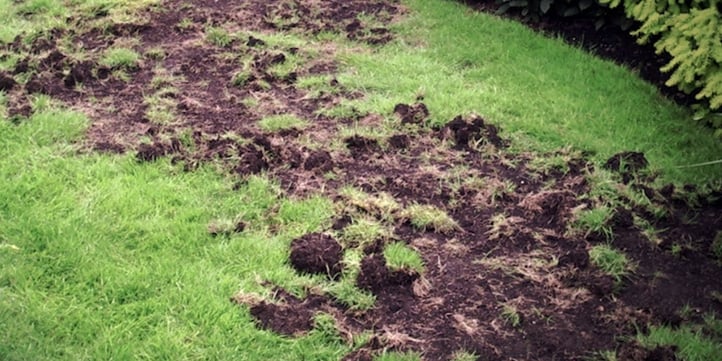
To make sure they do their job properly, beneficial nematodes can only be applied within very specific windows. That is because they require moisture to survive, and softer soil allows them to burrow more easily.
Nematode Grub Control applications are usually done in Spring or Fall, depending on weather conditions. The lawn needs to be wet prior to application, and must be continually watered for up to 10 days after the application, ensuring a moist environment for them to thrive in.
For more lawn care tips and tricks, follow us on Facebook and Pinterest.
Related Posts
Fall Lawn Diseases and Pests We're Not Thankful For
Homeowners have a lot to be thankful for during this time of year. There are cooler temperatures...
Management Techniques for Controlling Insects In Your Lawn
If you have insects feeding on your lawn and causing damage, it can be difficult to know how to...
Common Canadian Lawn Insects
A green, luscious lawn is a beautiful thing, but unless you really get to know your lawn, all of...



